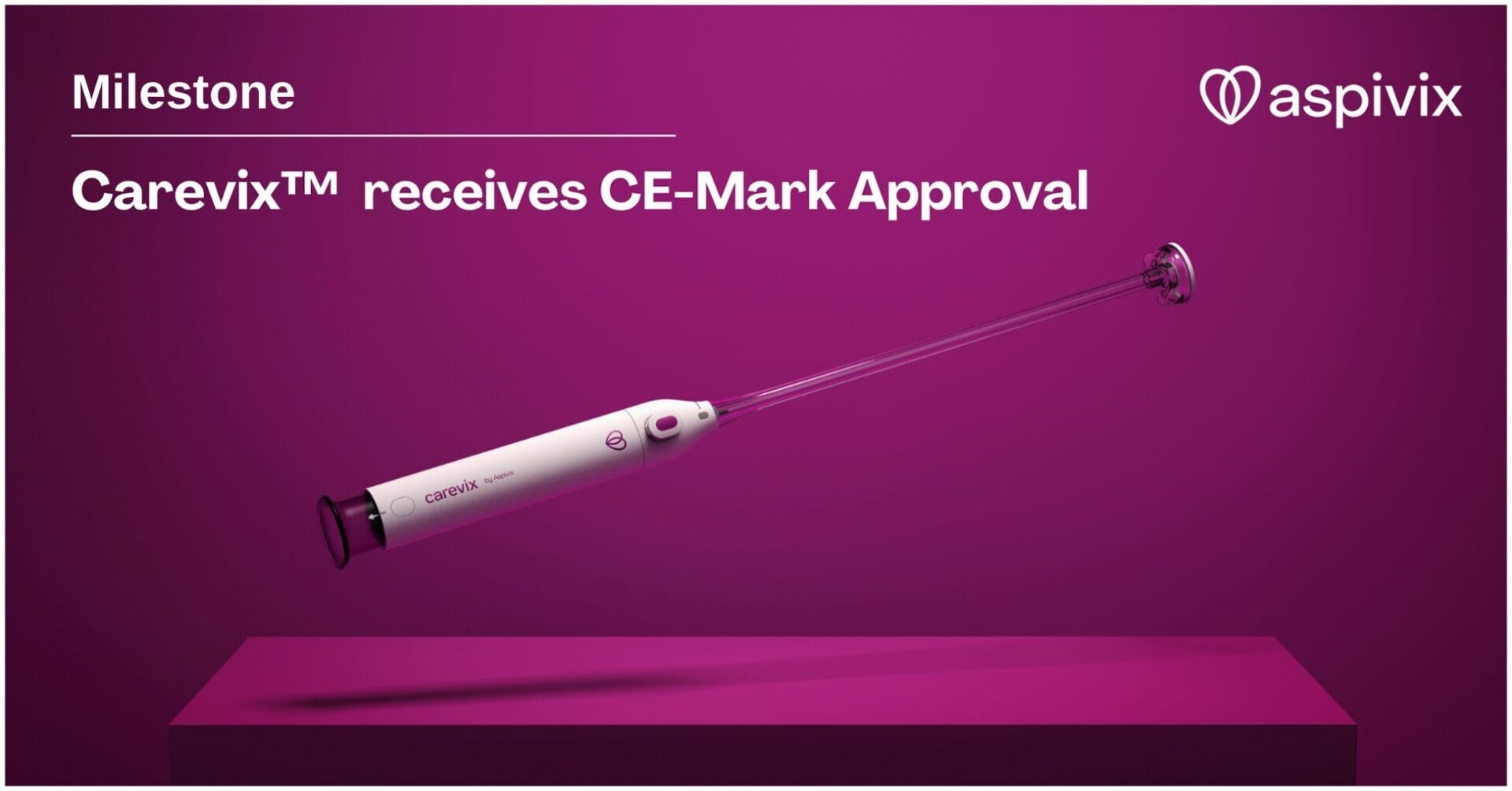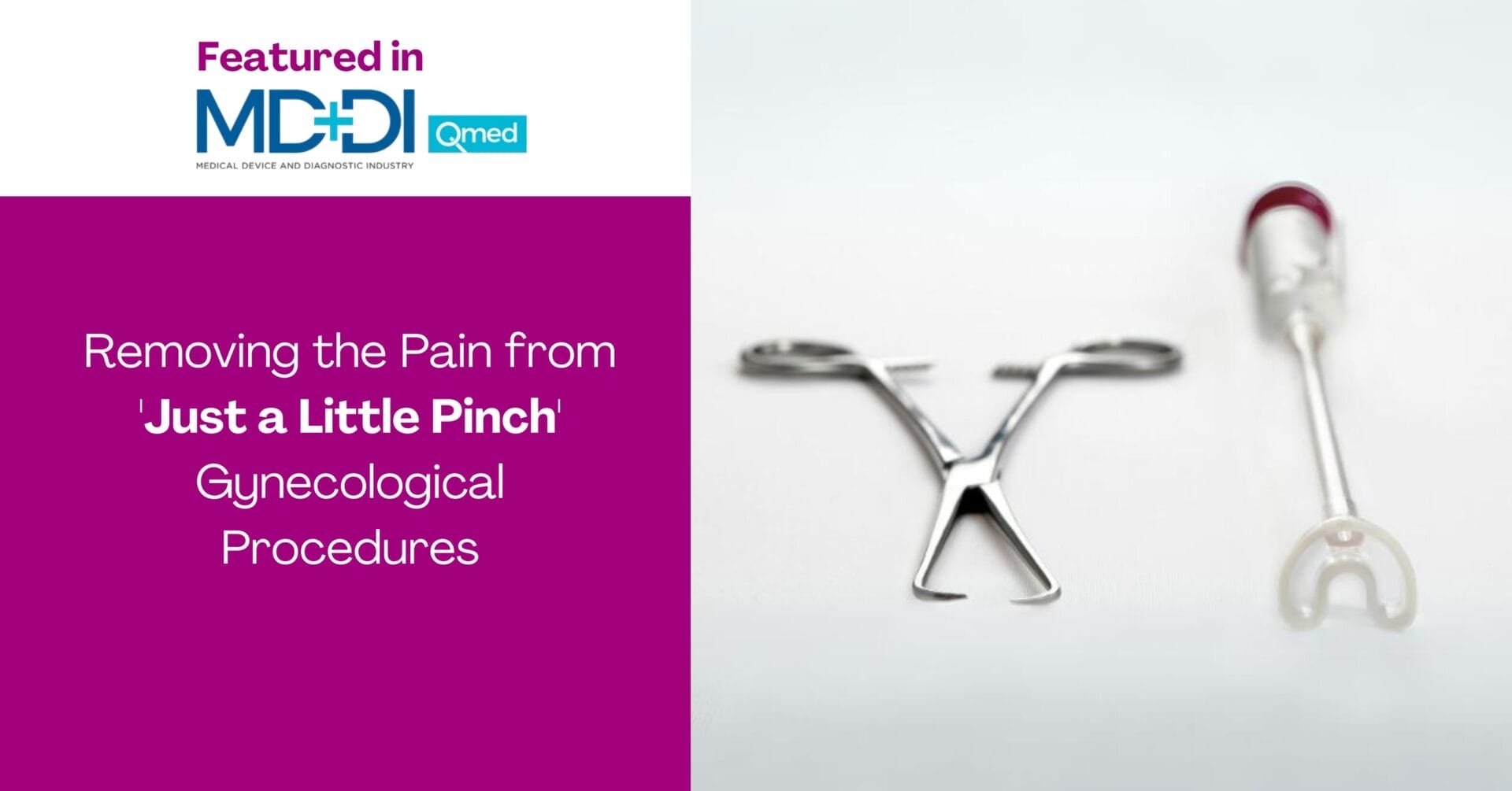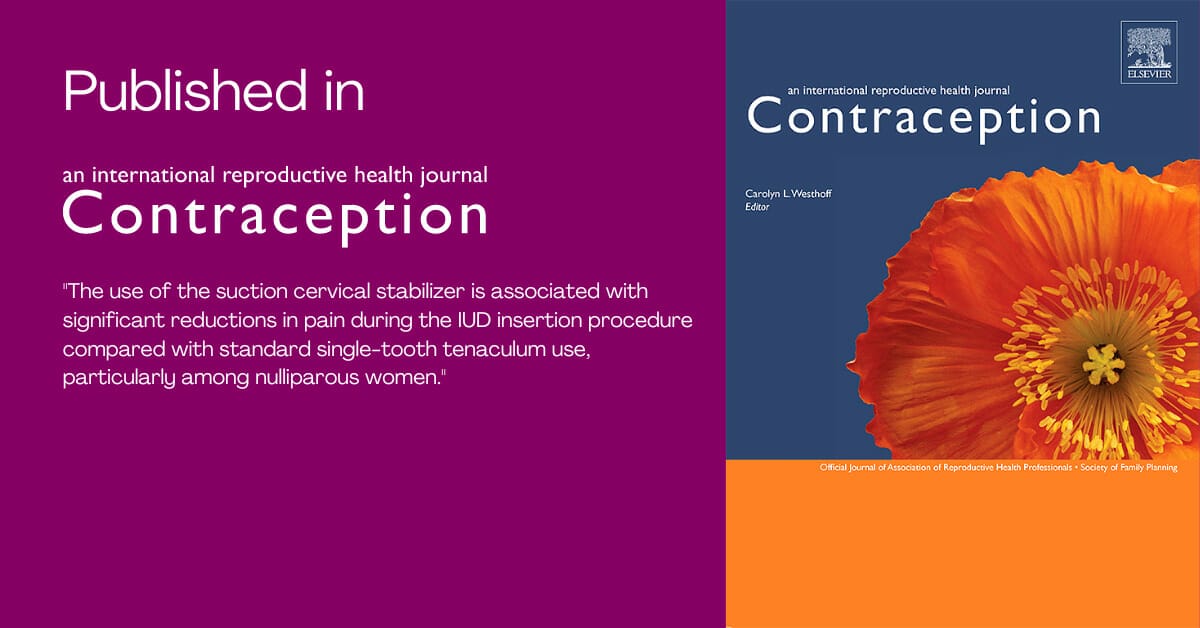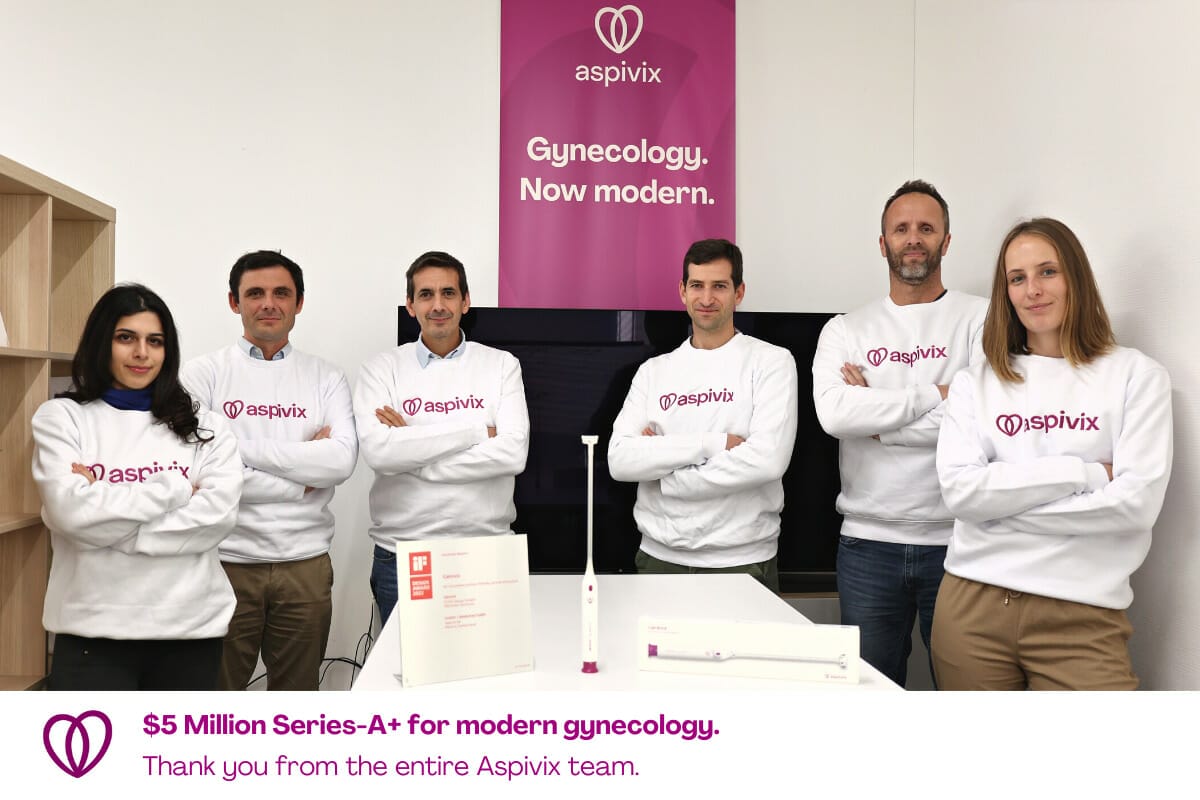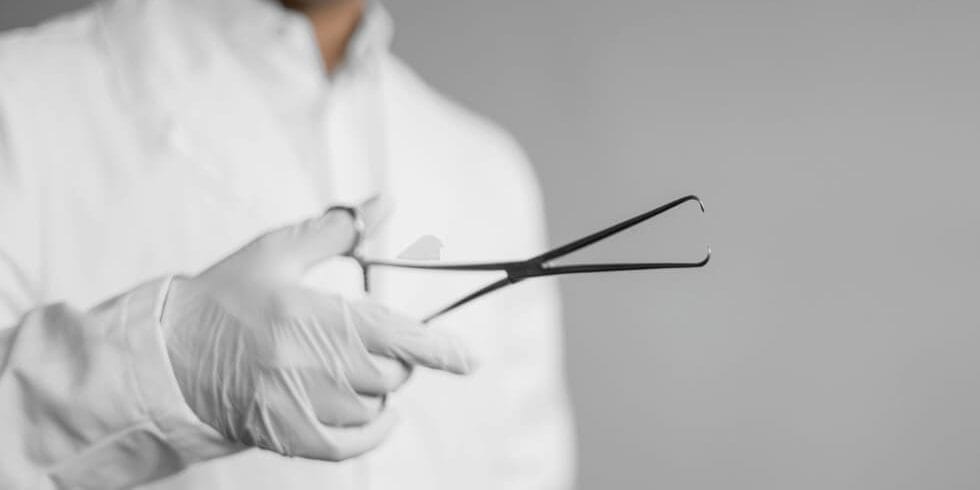
Tenaculum: For Over 100 Years Women Have Endured Pain in Gynecology
The medical experience could be sometimes painful and traumatic. For women, who have been raised to accept pain and discomfort as “part of life” e.g. menstrual cramps, natural delivery – enduring this fact in gynecological care is an everyday reality.
What is one of the perpetrators of pain in gynecology? And is pain inevitable? Let’s take a closer look at a century-old gynecological tool called the cervical tenaculum forceps also known as the tenaculum.
A Common Tool That Causes Pain and Bleeding
The tenaculum is a medical instrument that has been commonly used in gynecology for over a century. Every year, about 80 million women around the world suffer from trauma caused by the use of this device. In fact, 89% of women report moderately to severe pain during procedures using tenaculum.
But what triggers this pain?
The tenaculum resembles a pair of scissors with sharp-pointed hooks at the end. For procedures that require access to the uterus, gynecologists insert the tenaculum into the vagina, piercing the cervix tissue to seize and pull it steadily (e.g. during IUD insertion).
Such procedures, often carried out without anesthesia, have been performed for more than hundred years, and has remained almost unchanged.
Dr. Martin Winkler – well-known for his many articles on Women’s Health – describes the tenaculum as a butcher’s hook, that can make holes in the cervix.
While the tenaculum is highly effective because it provides a firm and strong hold of the cervix, it often causes pain and bleeding. These undesirable side effects discouraged some women from getting one of the most effective methods of contraception, the IUD.
According to a survey conducted by ASPIVIX with 500 European women, 18% report fear of pain as the main reason for not choosing an IUD.
To reduce the pain caused by the tenaculum, doctors use the “slow” and “cough” techniques. The slow method requires closure of the tenaculum over a 5-seconds period while in the cough method the patient takes a deep breath and coughs at the closure of the tenaculum.
Neither of these methods have significantly reduced the pain associated with tenaculum use.
Is it Time For a More Modern Approach to Women’s Healthcare?
The predecessor of tenaculum was a forceps bullet extractor, which was a common surgeon’s tool used to extract bullets on the battlefields. During the Civil War in the United States, this tool was used particularly to remove bullet from the patient’s body or to pull out arteries to tie them off.
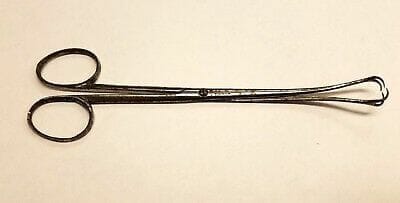
Antique surgical forceps or bullet extractor, Civil War Era 1861-1865.
Inspired by the shape of the bullet extractor, Dr. Pozzi, a pioneer of modern gynecology, developed in the end of 19th century a gynecological tool called Pozzi forceps, also known as tenaculum. Since then, its shape has hardly changed and persists till today.
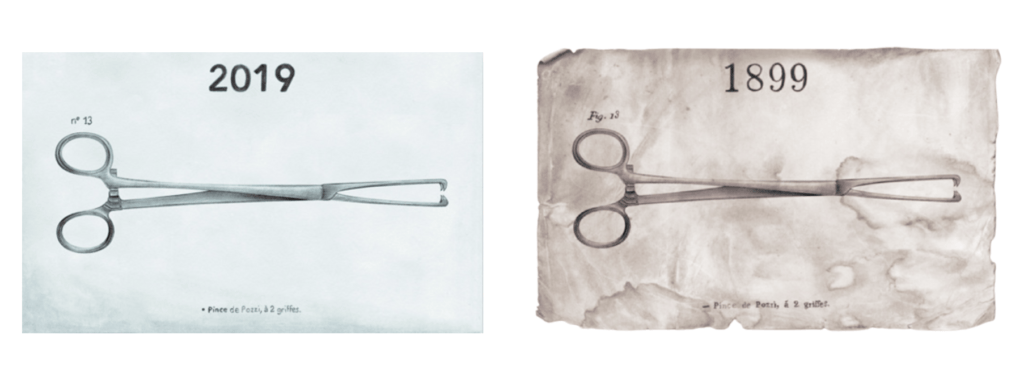
It begs the question: do we want to continue using a harmful medical tool whose history dates back more than 100 years? Is it not the time for a more modern approach to women’s healthcare?
Re-Imagining Traditional Devices in Gynecology
In an effort to reduce pain and bleeding associated with the tenaculum, ASPIVIX is developing a tool that replaces the sharp hooks of the tenaculum with a vacuum based-suction head. Our atraumatic tool aims at delivering a modern and gentle method to grasp and stabilize the cervix.
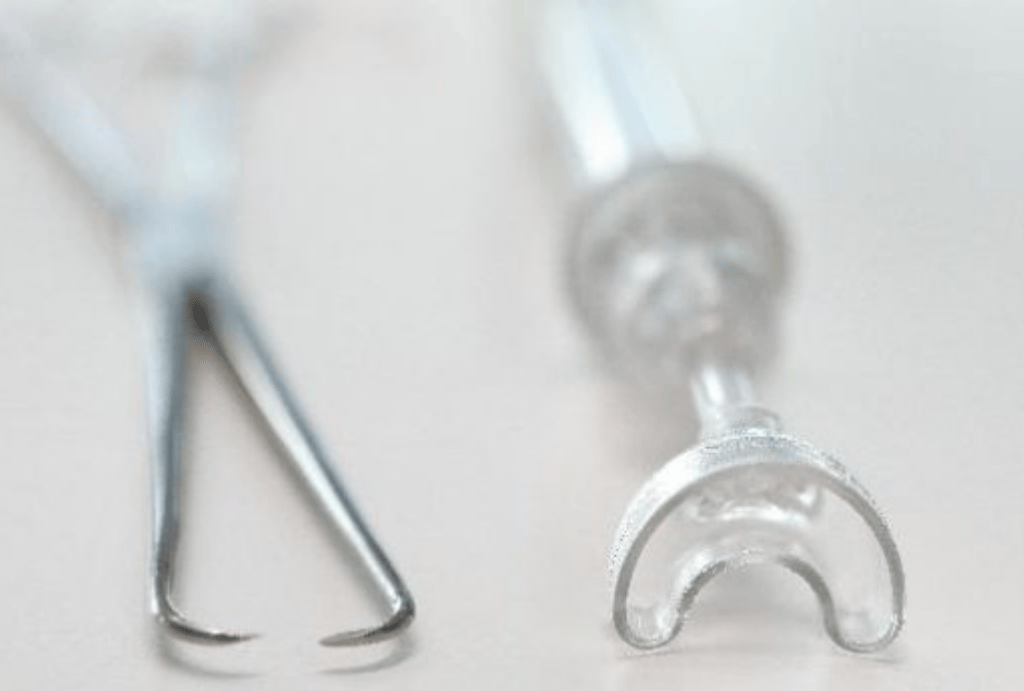
The sharp hooks of the tenaculum next to a vacuum based-suction head.
Stabilization of the cervix is required for many procedures that need uterus access such as the insertion of an Intrauterine Device for contraception or an Intrauterine Insemination for reproductive medicine.
It is time to meet women’s healthcare needs.
Ceek Women’s Health
The tenaculum is not the only obsolete toll still in use. Another commonly used device is the speculum. Specialists use the speculum- a two-bladed instrument that looks like a duck bill—to inspect the cervix, test for Sexually Transmitted Diseases (STDs), and obtain pap smears.
It was invented in 1845 by American surgeon James Marion but its general design and function have barely evolved since then.
The feel of the cold metal, the creaking sound of the screw and the pressure as the speculum spreads open the vaginal canal – cause many women to experience discomfort.

Traditional metal speculum vs. plastic reusable speculum by Ceek Women’s Health.
To transform women and clinicians’ experience in the exam room, American company Ceek Women’s Health has recently launched a speculum made of plastic. Their flagship product, reusable Nella Nuspec delivers ultimate patient comfort thanks to a narrower bill, temperature-neutral material and quiet operation.
Discussion
Women’s healthcare is in dire need of innovation in comparison to other areas of healthcare. More and more companies are joining the movement to advance the experience for both patients and providers.
We do not need to accept the status quo. Pain, discomfort and trauma endured during common gynecological procedures are not longer acceptable in 21st century.
Sources:
- Use of the levonorgestrel releasing-intrauterine system in nulliparous women – a non-interventional study in Sweden
- Tenaculum
- Les gynécos travaillent avec des outils centenaires
- “Pain on a Cosmic Level”
- Next generation vacuum-based cervical tenaculum, an atraumatic device that reduces the pain and bleeding associated with frequent gynaecological procedures.
- Pain perception with cervical tenaculum placement during intrauterine device insertion: a randomised controlled trial
- Cervical cancer in the work of the unconventional Samuel Pozzi (1846-1918), pioneer of modern gynaecology
- Next generation vacuum-based cervical tenaculum, an atraumatic device that reduces the pain and bleeding associated with frequent gynaecological procedures.
- Speculum Speculations: The Past and Future of an Iconic Gynecology Instrument
- The Speculum Finally Gets a Modern Redesign
- Does the vaginal speculum need a redesign?
- Introducing The Smarter Reusable Speculum
Share this story:


